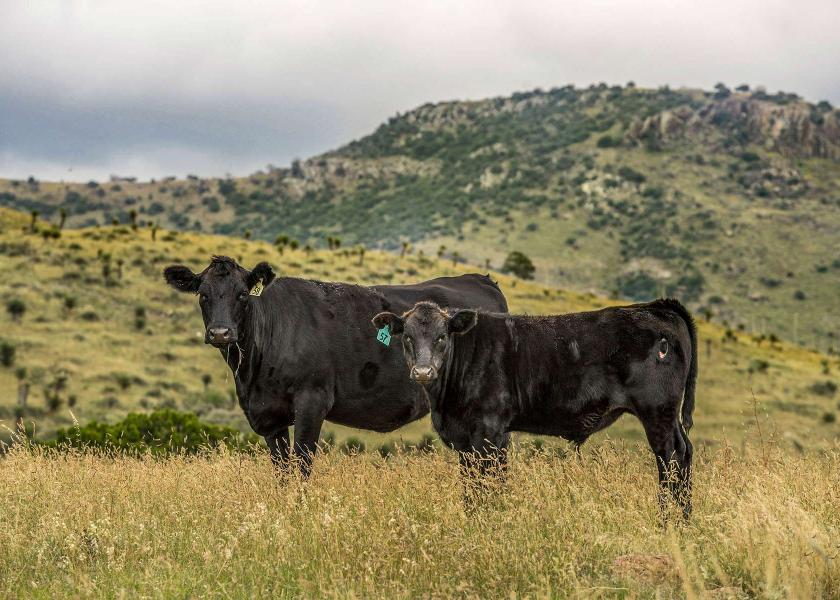Sexten: Past Performance to Predict Future Gain?

There are few better industry value-driver bellwethers than the summer video sales. As you watch the sales the cattle lot descriptions will have multiple badges, program banners and descriptors attached in order to convey value. The merits of age and source verification, health and preconditioning programs as well as weaning status have been covered previously in these pages and by many others.
Whether you agree with the badges and programs market valuation is immaterial, while the market may be imperfect it’s always right. Historically I called the difference between perceived value and market price the difference between value added and value captured, I would add value communicated to that equation today.
A recent article in Applied Animal Science by Ethan Blom and co-workers from South Dakota and Texas Tech Universities studied a common pricing differential inferred during sales, backgrounding growth rate. Between cattle videos and management descriptions most buyers make assumptions about previous nutrition and growth. Compare market reports for a “fleshy” discount and “thin” premium and you can quickly hypothesize how feedyards think this study will turn out.
The authors evaluated the role backgrounding growth rate plays in finishing performance by looking at management to gain 2.0, 2.5 or 3.0 lb / head / day using a limit-fed corn silage based diet. In experiments where phase production is evaluated we see how the biology of growth is affected in each phase, assuming the trade off in one phase is captured in another.
The challenge is most operations in the beef supply chain specialize in either the backgrounding or finishing phase and thus these tradeoffs represent real opportunities lost or captured. Gaining a greater understanding of how your development decision impacts the next phase provides context around the market signals from bidders and buyers.
If we look at the greatest, 3.0 lb/day and slowest, 2.0 lb/day experimental groups, the faster growth rate shortened time to feedyard entry by 22 days while improving feed efficiency by 20%. Total dry matter feed intake was 225 lbs greater per head for the slower growing cattle. The reason feedyards favor cattle managed at lower rates of gain is apparent in the finishing results.
Over the 112 day finishing period the cattle backgrounded on the lowest rate of gain (2.0 lb/day) were 2.5% more feed efficient, gained 0.3 lb/hd/day more and achieved a 35 lb greater final weight (1,383 vs 1,348 lb) than the 3.0 lb/day backgrounded steers.
Carcass composition was comparable: 0.6 inches of backfat, 13.5 in2 ribeye and average choice quality grade. The primary exception was the 22 lb greater carcass weight in the 2.0 lb / day steers. While the exception in this experiment, greater harvest weight is not uncommon in cattle with longer, slower growing backgrounding periods.
Considering the feeding system as a whole, the 2.0 lb / day development system required a 21 day longer feeding period and 345 lbs more dry matter for the greater final live and carcass weights. Overall feed efficiency tended to favor more rapid development systems by 0.20 lb DM / head / day.
Beyond the scope of this experiment, should future evaluations consider the carbon footprint of these phased tradeoffs? Was the environmental cost of increasing days on feed by 21 days worth the additional final weight? If the market were to incentivize reduced environmental footprint how would we optimize systemic efficiency?
The research team noted optimization strategies for backgrounding growth rate differs relative to cattle type, class and mature size. In this case the differences between growth rates was more impactful than the target of 2.0, 2.5 or 3.0 lbs/ head / day. Unfortunately in most experiments as well as the market reports cattle type, class and size are described with minimal useful data for prediction of mature size, growth rate or feed efficiency.
Class is straightforward, steers or heifers. Type is more variable, often limited to visual breed composition estimates with no reference to what side of breed average for growth they reside. For mature size we have the USDA to guide us where large framed cattle are those finishing at 0.5 inches of backdate at greater than 1,250 lbs. Many would suggest the 150 lb difference between medium and large framed remains the same but the base exceeds the 1,250 lb threshold in modern genetics.
Back to the value communicated part of the equation I mentioned earlier. If you're going to feed something $7 corn at 5% interest for 180 days, aside from compensatory gain, what tool can you use to predict growth and feed efficiency potential in a black-white face, large-framed steer?
Imagine using a genetic prediction to quantify the performance potential and optimize cattle management. Making buying decisions on groups of animals using combined genetic potential will be the next evolution of risk management.







